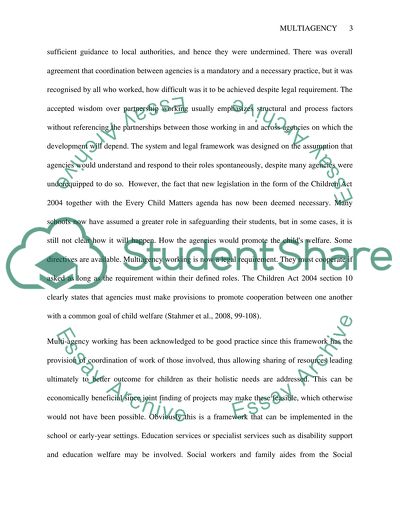Cite this document
(“Multi-Agency Practice for Children Essay Example | Topics and Well Written Essays - 3000 words”, n.d.)
Multi-Agency Practice for Children Essay Example | Topics and Well Written Essays - 3000 words. Retrieved from https://studentshare.org/sociology/1529842-multi-agency-practice-for-children
Multi-Agency Practice for Children Essay Example | Topics and Well Written Essays - 3000 words. Retrieved from https://studentshare.org/sociology/1529842-multi-agency-practice-for-children
(Multi-Agency Practice for Children Essay Example | Topics and Well Written Essays - 3000 Words)
Multi-Agency Practice for Children Essay Example | Topics and Well Written Essays - 3000 Words. https://studentshare.org/sociology/1529842-multi-agency-practice-for-children.
Multi-Agency Practice for Children Essay Example | Topics and Well Written Essays - 3000 Words. https://studentshare.org/sociology/1529842-multi-agency-practice-for-children.
“Multi-Agency Practice for Children Essay Example | Topics and Well Written Essays - 3000 Words”, n.d. https://studentshare.org/sociology/1529842-multi-agency-practice-for-children.


